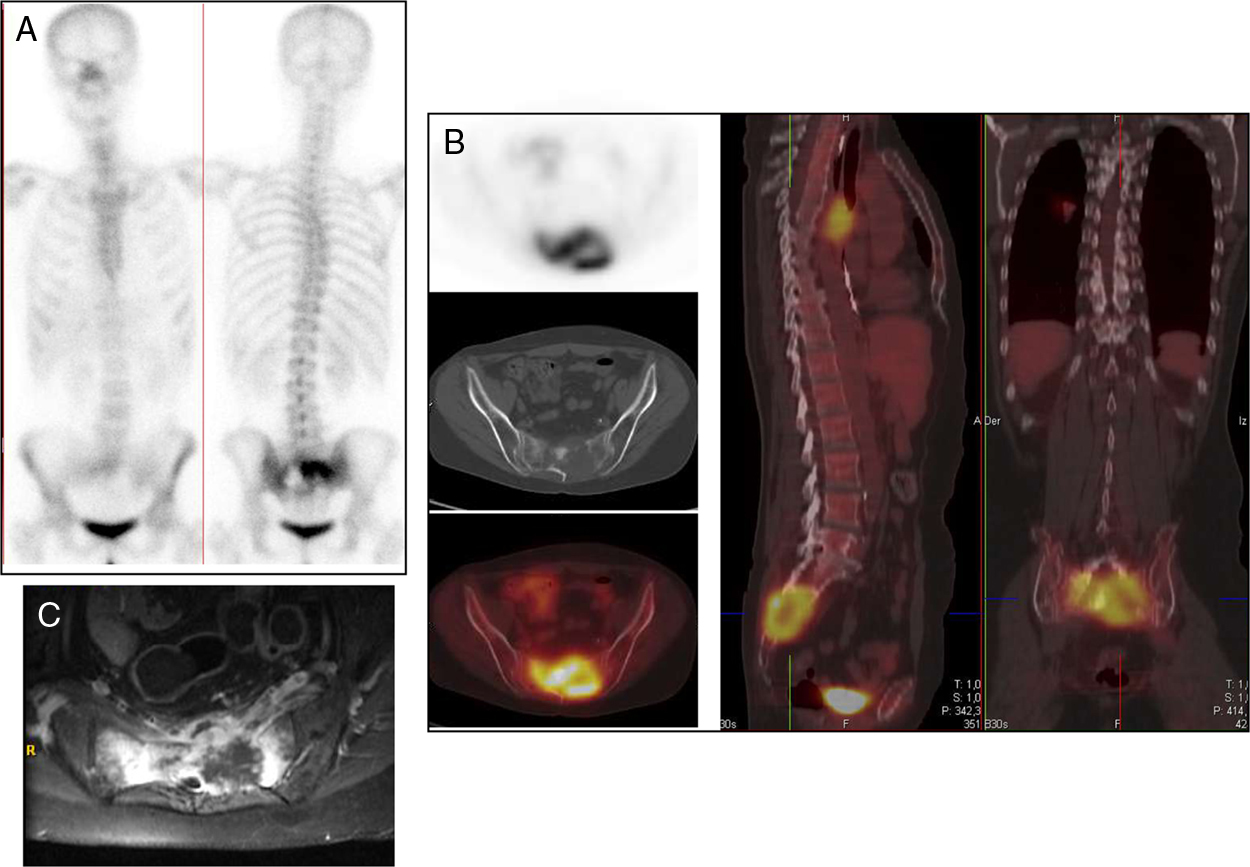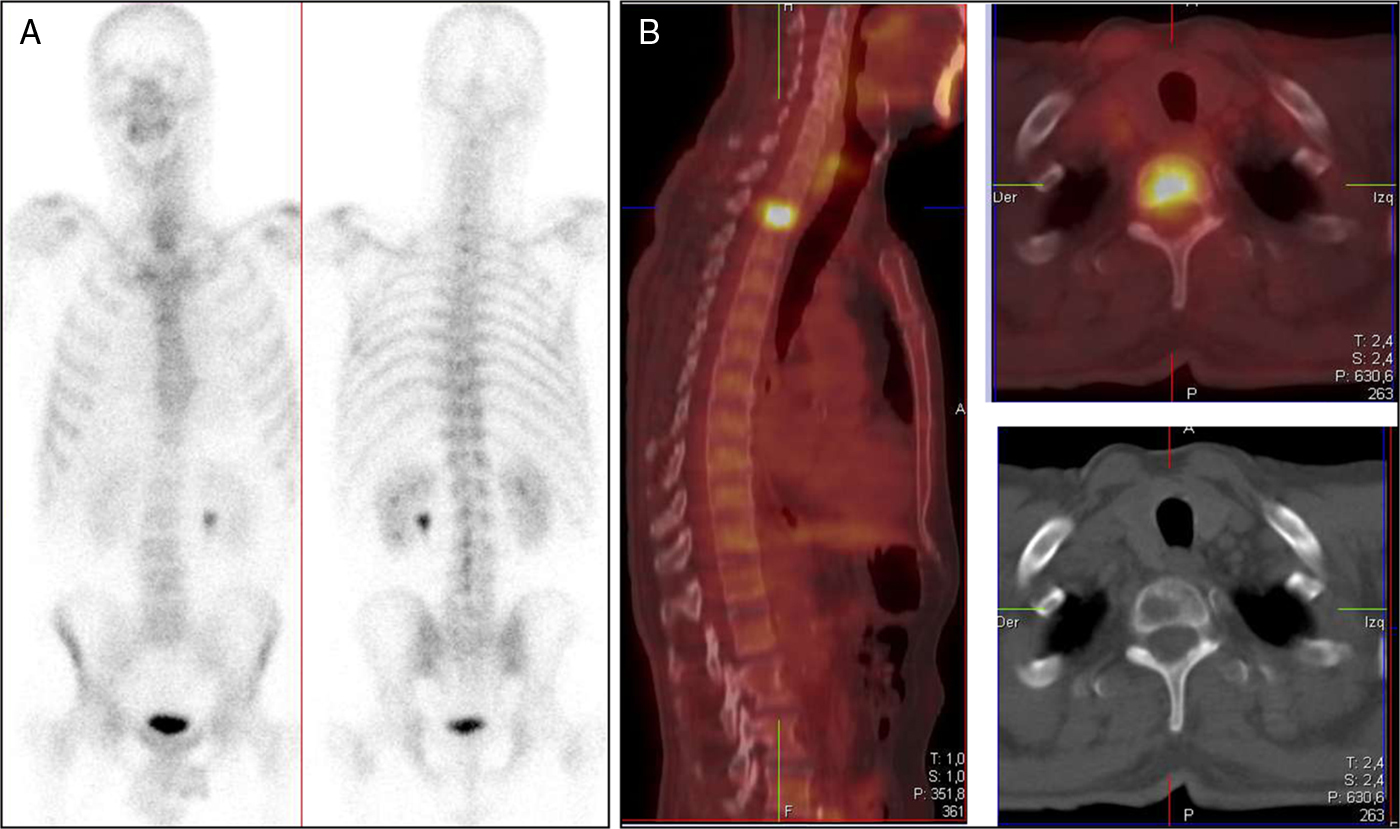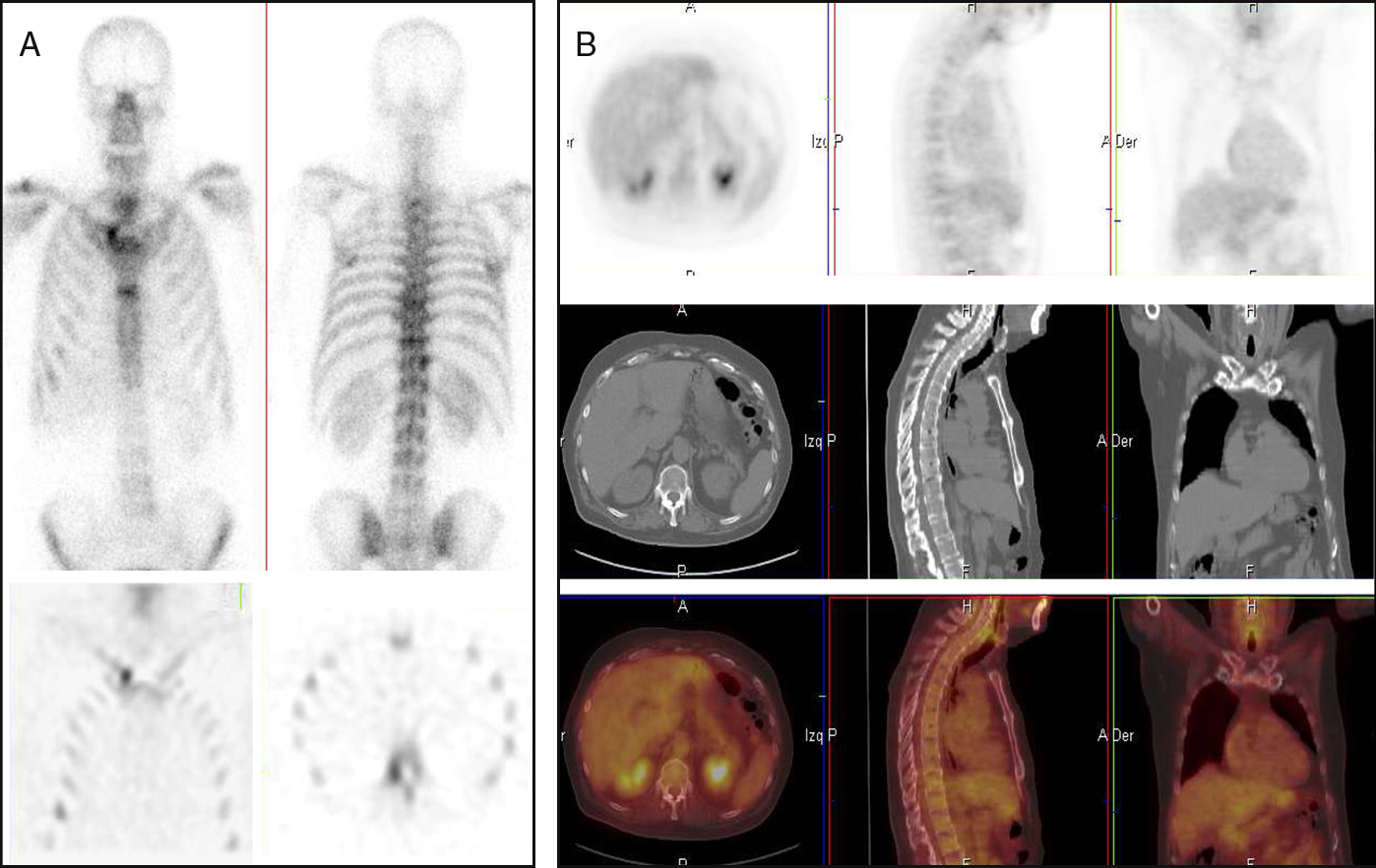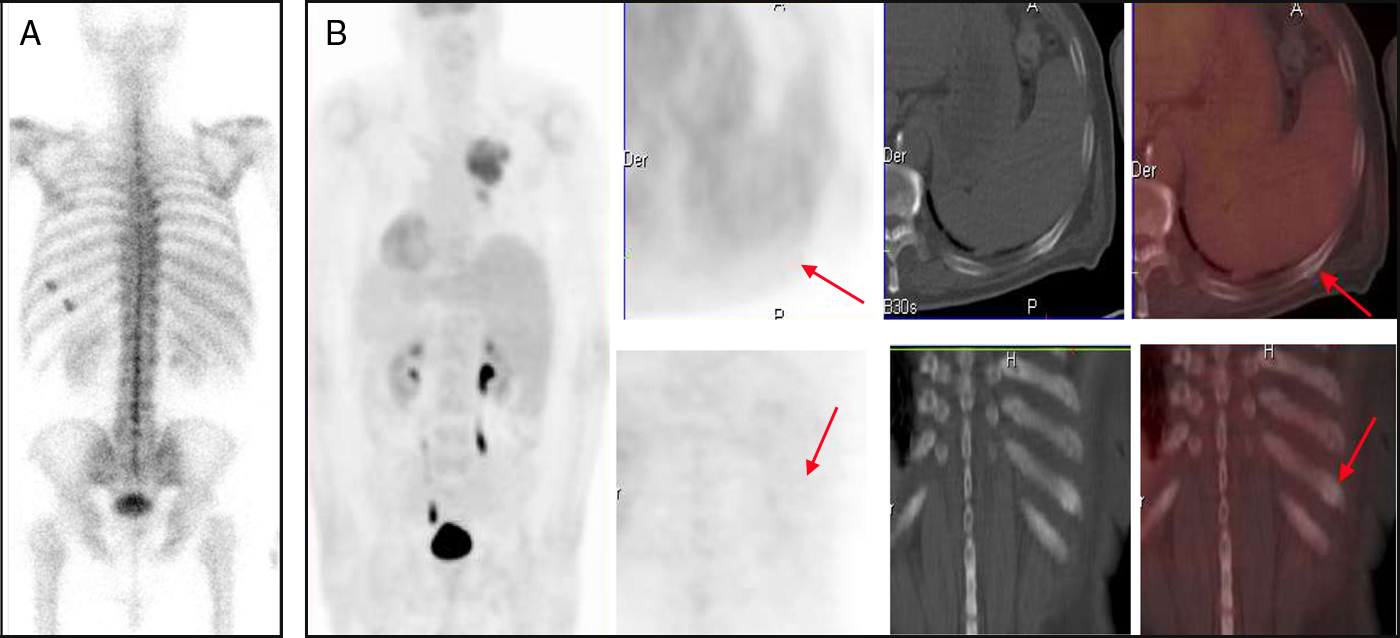Comparar los hallazgos de la gammagrafía ósea (GO) y la gammagrafía PET/TAC con FDG (FDG PET/TAC) en la detección de metástasis óseas en el cáncer de pulmón.
Material y métodosSe estudió a 32 pacientes con cáncer de pulmón que fueron sometidos a una GO y una FDG PET/TAC en un periodo de tiempo de 15,9±18,6 días. Los resultados de ambas técnicas se compararon con la histología, cuando estuvo disponible, con técnicas estructurales radiológicas y con el seguimiento clínico. En 30 pacientes se llegó a un diagnóstico definitivo de los hallazgos gammagráficos. En 2 pacientes no se obtuvo diagnóstico final.
ResultadosLa GO fue positiva en 25/30 pacientes (83,3%) y negativa en 5 pacientes. La FDG PET/TAC fue positiva en 21/30 pacientes (710%) y negativa en 9. La GO y la FDG PET/TAC fueron positivas en 19/30 pacientes (63,3%). En 6 de los 19, ambas técnicas mostraron igual número de lesiones óseas. En 10 de los 19, la FDG PET/TAC mostró mayor número de metástasis óseas que la GO. En 3 de los 19 pacientes la GO mostró más lesiones que la FDG PET/TAC. En 2/30 pacientes (6,6%), la GO fue normal y la FDG PET/TAC demostró lesiones óseas confirmadas como metástasis. En 6/30 pacientes (20%) la FDG PET/TAC fue negativa y la GO positiva. La GO y la FDG PET/TAC fueron normales en 3/30 pacientes (10%).
ConclusiónEn pacientes con cáncer de pulmón, la FDG PET/TAC detecta un mayor número de lesiones óseas metastásicas que la GO. Asimismo identifica metástasis óseas en GO negativas. En nuestra experiencia, cuando la GO fue positiva y la FDG PET/TAC negativa las lesiones observadas estuvieron en su mayoría relacionadas con procesos óseos degenerativos y fracturas. En la práctica clínica la FDG PET/TAC y la GO tienen un papel complementario en la valoración ósea de los pacientes con cáncer de pulmón.
To compare the bone scintigraphy (BS) findings and PET/CT scintigraphy with FDG (FDG PET/CT) in the detection of bone metastases in lung cancer.
Material and methodsWe studied 32 patients with lung cancer who underwent FDG PET/CT and BS in a period of 15.9±18.6 days. The results of both techniques were compared with the histology, where available, radiological structural techniques and the clinical follow-up. In 30 patients, a definitive diagnosis was reached with the scintigraphic findings. No final diagnosis was obtained in 2 patients.
ResultsBS was positive in 25/30 patients (83.3%) and negative in 5 patients. FDG PET/CT was positive in 21/30 patients (70%) and negative in 9. The BS and the FDG PET/CT were positive in 19/30 patients (63.3%) for the detection of bone metastases. In 6/19, both techniques showed the same number of bone lesions. In 10/19, FDG PET/CT showed a greater number of bone metastases than BS. In 3/19 patients, BS showed more lesions than FDG PET/CT and in 2/30 patients (6.6%), the BS was normal and the FDG PET/CT showed bone lesions which were confirmed as metastasis. In 6/30 patients (20%), the FDG PET/CT was negative and the BS was positive. BS and FDG PET/CT scan were normal in 3/30 patients (10%).
ConclusionsIn patients with lung cancer, FDG PET/CT scan detected more metastatic bone lesions than BS. It also identified bone metastasis in negative BS. In our experience, when the BS was positive and the FDG PET/CT scan was negative, the lesions observed were mostly related with degenerative bone conditions and bone fractures. In the clinical practice, the FDG PET/CT and BS have a complementary role for the assessment of bone status in lung cancer patients.
Artículo
Comprando el artículo el PDF del mismo podrá ser descargado
Precio 19,34 €
Comprar ahora










